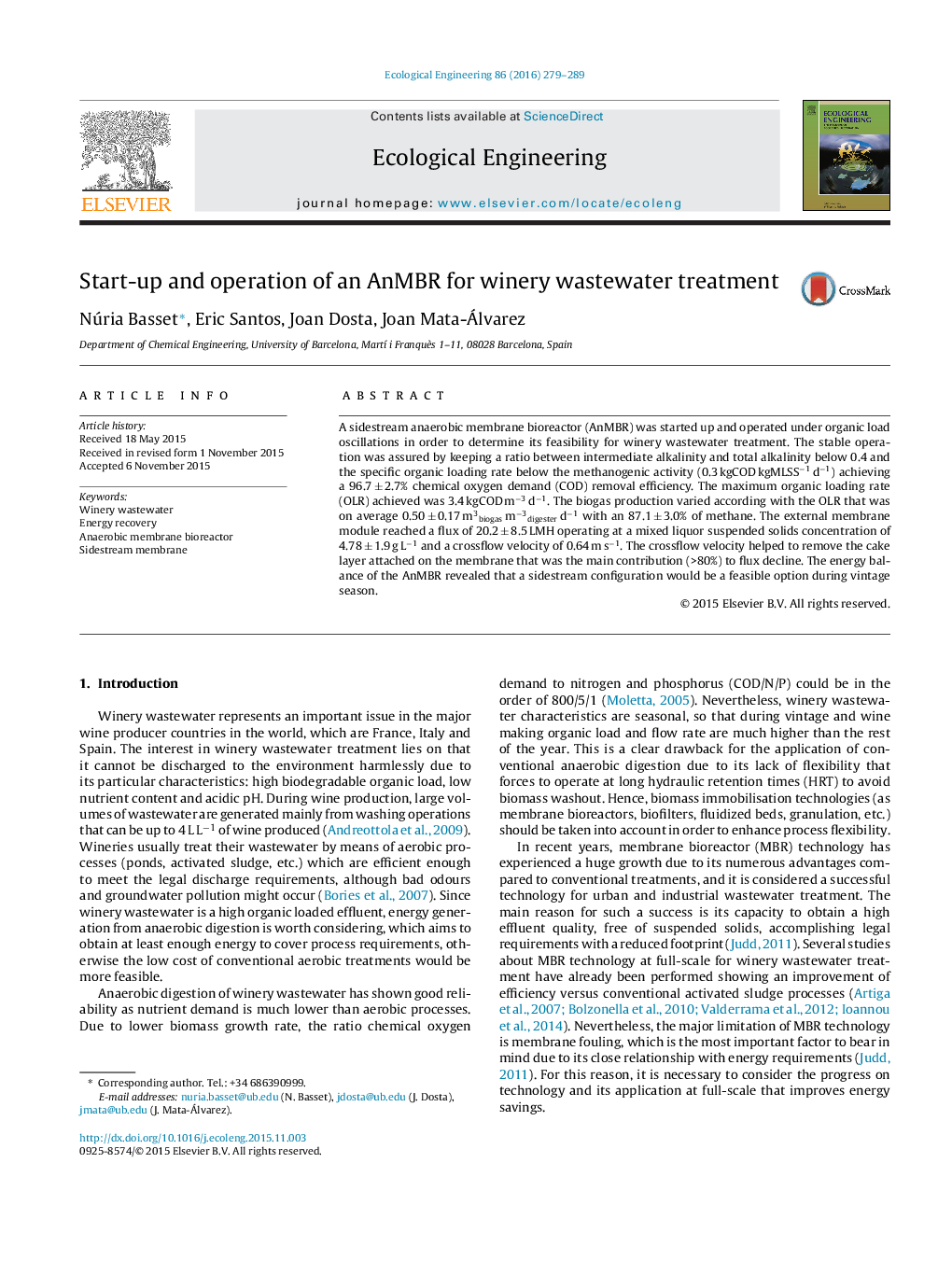| Article ID | Journal | Published Year | Pages | File Type |
|---|---|---|---|---|
| 4388939 | Ecological Engineering | 2016 | 11 Pages |
•The AnMBR treatment resulted in a 96.7 ± 2.7% of COD removal of winery wastewater.•The stable operation was assured by keeping a ratio IA/TA below 0.4.•The growth of Methanosaeta spp. improved of the biomass affinity to the substrate.•The cake layer of organic origin was the main contribution to flux decline.•AnMBR with sidestream configuration would be feasible during vintage season.
A sidestream anaerobic membrane bioreactor (AnMBR) was started up and operated under organic load oscillations in order to determine its feasibility for winery wastewater treatment. The stable operation was assured by keeping a ratio between intermediate alkalinity and total alkalinity below 0.4 and the specific organic loading rate below the methanogenic activity (0.3 kgCOD kgMLSS−1 d−1) achieving a 96.7 ± 2.7% chemical oxygen demand (COD) removal efficiency. The maximum organic loading rate (OLR) achieved was 3.4 kgCOD m−3 d−1. The biogas production varied according with the OLR that was on average 0.50 ± 0.17 m3biogas m−3digester d−1 with an 87.1 ± 3.0% of methane. The external membrane module reached a flux of 20.2 ± 8.5 LMH operating at a mixed liquor suspended solids concentration of 4.78 ± 1.9 g L−1 and a crossflow velocity of 0.64 m s−1. The crossflow velocity helped to remove the cake layer attached on the membrane that was the main contribution (>80%) to flux decline. The energy balance of the AnMBR revealed that a sidestream configuration would be a feasible option during vintage season.
Graphical abstractFigure optionsDownload full-size imageDownload as PowerPoint slide
